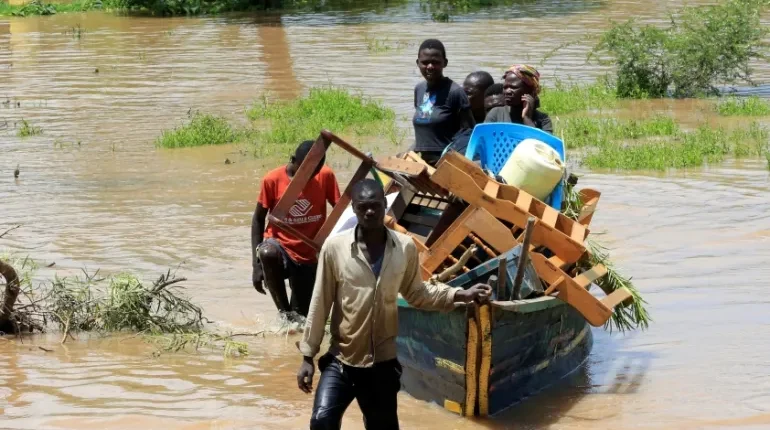The Kenyan government has ordered people living near 178 dams and reservoirs to evacuate as heavy rains continue.
The interior ministry warned that the water bodies “have filled up or are nearly filled up and may spill over any time, posing a high risk to persons living in their neighbourhood”.
It gave residents living near them – as well as those within a 30m (98ft) wetland corridor of the Nairobi River – 24 hours from 18:30 local time on Thursday to leave.
Recent heavy rains have caused severe flooding and landslides across Kenya and Tanzania.
Some 210 people have died in Kenya since March, with a further 90 missing, according to the latest official estimates. A further 155 people have died in Tanzania, and 29 in Burundi.
At least 50 people are thought to have died when a mudslide tore through Kenyan villages near Mai Mahiu while they slept. Flooding has also affected the capital, Nairobi.
Officials expect the situation to worsen in the coming days with the arrival of more extreme weather.
President William Ruto is due to address the nation shortly and is expected to give further details.
“Crucially, the coastal region is likely to experience Cyclone Hidaya, which will result in heavy rainfall, large waves and strong winds that could affect marine activities in the Indian Ocean,” the president’s office said on Thursday.
The Kenyan meteorological department said Nairobi is expected to be among the areas worst affected by the storm, however it also said that the cyclone would not hit Kenya directly.
The interior ministry said the situation “could get dire because the soils around the country are fully saturated” with water.
The ministry added that it had established temporary shelters, food and essentials for evacuees, which would be placed at assembly points.
Included in the evacuation were areas near the Nairobi Dam and Titanic Dam. Buildings within the Nairobi River wetland area would be removed, the interior ministry said.
It is unclear how many people will be affected by the evacuation order.
The Kenyan government has faced criticism over the speed of its response to the ongoing natural disaster.
Although President Ruto has said the government would procure land for those who have had to leave their homes, some displaced people are still stranded after their homes were swept away.
The government is yet to release any detail on the evacuation plans, or how people will be notified.
Mr Ruto has defended his administration, telling the BBC on Monday that “a whole-of-government approach is under way”.
Following a cabinet meeting on Thursday, Mr Ruto’s office said victims of the floods were “increasingly receiving help with food and non-food items” and attributed the extreme weather to climate change.
“[The] cabinet resolved that the government, from now on, will rally the country in implementing measures, programmes and policies that will mitigate the effects of climate change,” it pledged.
One of the biggest drivers of the rains is the Indian Ocean Dipole – opposing areas of warm and cold surface water often refered to as the “Indian Niño” because of its similarity to El Niño in the Pacific.
Warmer surface temperatures caused by climate change pushes more moisture and energy into the atmosphere, making weather patterns more erratic and severe.
Source:bbc.com





